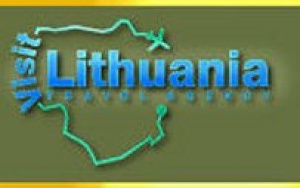Lithuania celebrates the future at WTM

Ambitious Lithuania goes into World Travel Market this year promising to make its second millennium one to remember.
The Republic has been celebrating significant milestones during 2009 – with the official 1,000th birthday of its name and capital city Vilnius the current European Capital of Culture combining to encourage foreign visitors to uncover more about the Baltic gem.
Culture and city breaks
ADVERTISEMENT
Tourism chiefs are intent on building on the goodwill generated in the last 12 months and have pledged to cement Vilnius as a major centre for the arts going forward.
In 2010, the Lithuanian capital – famed for its Baroque UNESCO-listed old town and impressive array of medieval buildings – will continue to play host to music and entertainment events. Highlights will include several jazz, theatre and film festivals (full details in release: “Autumn Winter 2009 Events”).
Meanwhile, the new National Art Gallery has already signalled its intent to continue to draw increasing numbers of visitors - its first international exhibition ‘Cold War Modern design 1945–1970‘ (running until 7 December 2009) has just arrived from London.
Efforts to encourage more city-break visitors has seen the development of the Vilnius City Card this year. Available as a 24-hour and 72-hour sightseeing pass (Euro15 and Euro25 respectively), the City Card gives tourists access to major attractions and museums, as well as discounts in selected shops and restaurants.
While Vilnius is the country‘s major gateway, Augusta Jaudegyte, UK director of the Lithuian National Tourism Office, is hopeful visitors will begin to use it as a jumping off point to lesser-known cities.
Jaudegyte explained: “Both Kaunas and Trakai offer fascinating alternatives for visitors who really want to explore further afield. Kaunas is very close to Vilnius so can be combined as a day-trip, while Trakai is a good option for those people who are staying a little longer.
“We will be promoting these twin-centre and touring options to tour operators at WTM, because they are a perfect introduction to Lithuania beyond the capital city.
“We also intend to highlight the relative low prices in the country, which should be a major selling point for visitors in the current economic climate. Going out to bars and restaurants in Lithunia is significantly cheaper than other European destinations.“
Trakai, which lies 28km west of Vilnius, is an historic city and lake resort noted for its diverse ethnic mix and famed for its small Karaim community, which moved to the area in the 1300s. Their unique brightly painted, wooden clapperboard houses are of particular interest.
Kaunas, meanwhile, is Lithuania‘s second city and lies at the heart of the country. It is a must-see for architecture fans with buildings of all major movements dating back to the 14th century. Interestingly, the city also boasts 15 major museums.
Increased air lift and visitor numbers
Visitor numbers to Vilnius continue to rise year-on-year, with 1,602,000 visitors welcomed in 2008 and much of the growth coming from the UK. This was an increase of fiver percent compared to tourist numbers in 2007. The last year has seen the introduction of new direct services from Irish carrier Aer Lingus (daily from London Gatwick) and new Lithuanian airline Star1 (four times weekly, from London Stansted).
Natural beauty
Lithuania hopes to build knowledge of its outdoor pursuits in the trade, with its coast recognised as offering some of the best beaches in Europe.
Jewel in the crown is the UNESCO World Heritage-listed Curonian Spit, named this year by the UK’s ‘Guardian’ newspaper as a perfect seaside spot generally unknown outside of the country. The shifting dunes and pine forests which make up the 98km-long spit extends into the Baltic Sea and is accessed by a 10-minute ferry crossing from the Lithuanian port of Klaipeda.
The Curonian Spit is just one of the many natural attractions Lithuania boasts. Forests, lakes and rivers make up nearly 40% of the country, and its five national parks and 30 regional parks are packed with farmsteads offering an extensive choice of outdoor pursuits, including fishing, boating, yachting, diving, cycling, horse-riding and bird-watching.
Spa and wellness
Operators are also being encouraged to find out more about Lithuanian’s little-known spa industry. The country has four resorts - Palanga, Neringa, Druskininkai and Birstonas - offering a number of curative and recreational packages such as mud and mineral water baths, Ayurveda treatments and amber massage.
Conference and Incentive tourism
Lithuania is continuing to emphasise the strength of its modern infrastructure and wide-ranging accommodation choice for both leisure and corporate travellers. The country currently boasts more than 300 hotels (including properties from 14 international chains), 38 motels and 15 holiday camps.
In an effort to attract conference traffic, Vilnius has made major strides is boosting its conference capacity and can now accommodate 15,000 delegates across the city. Its largest conference venue at Le Meridien Villon can hold 3,000 people at a time and is the Baltic’s largest conference space.

